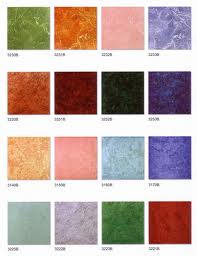|
| |
Ceramic Tiles Versus Vitrified Tiles
Main
Article page |
Beauty articles
|
Health page |
Computers|
Diseases |
Education |
Entertainment |
Family
Business |Fitness|
Fruits and Vegetables
|
Jobs |
General |
Personality|
Technology
|
Tourism |
Sports
House Plans |
House Loans |
Real Estate|
Vaasthu
Shastra|
Construction Tips
Engineering page
| Interior Design |
Property Buying Tips |
Renting Tips |
Journals /
Magazines

By Daniel Lanback: Since the beginning of time, ceramic tiles have been the popular choice for counter tops, walls, floors and even in roofing in every home. Vitrified tiles on the other hand have the distinct facade of colored glass. The word "vitrify" literally refers to the phrase "to change into glass or anything that looks like glass by undergoing some heat process. If you really want to know what's up with these two, you better check the tale of the tape, ceramic tiles versus vitrified tiles.
When it comes to properties, ceramic and vitrified tiles are both products of men or man made products, as it is popularly called. Ceramic are created from clay. The clay body is topped with a ceramic glaze. On the other hand, vitrified tiles are made by fusing silica and clay. The mixture are then heated or placed under high - fiery temperatures, which would then result to a non - porous tile with glass - like texture. The vitrified type doesn't need additional glaze to be added on to it.
Concerning the price tag, ceramics are definitely cheaper. However, both of them come in huge varieties of prices, colors, patterns and sizes. But ceramics are far cheaper and are much more commonly used at home compared to the vitrified ones. So when it comes to the price, ceramic tiles are much more desirable than vitrified.
When durability is concerned, vitrified tiles are sure winners. These tiles are much stronger than natural granite, which is one of the most durable products for modern homes. Vitrified tiles owns ceramic tiles when strength with regards to strength, ability to resist scratches and ability to withstand acids, alkalis, and chemicals without being damaged.
The composition of vitrified tiles is homogenous in nature. Ceramic tiles only have a decorative glaze on top of its clay layer. To achieve a glossy look, vitrified tiles are manually polished. Ceramic tiles however bases its beauty to the durability of the glaze applied over it. However, most glazes are not that durable and scratch resistant and over time, it yellows, it cracks and it chips.
Both vitrified and ceramic tiles are difficult to stain because of its non - porous properties. However, the grout that places them intact is the one who is more likely to be stained.
Maintaining vitrified tiles and ceramic tiles don't go far off from each other. Both have nearly similar ways of maintenance and cleaning. Both vitrified and ceramic doesn't need any special maintenance ritual after installation. Cleaning both types of tiles is also not so difficult. Both can be cleaned using a damp cloth. However, if the going gets tough, the tough gets rougher. In cases that your tiles are really greasy, you could use strong cleaning chemicals such as detergents and bleach. It is safe to use these chemicals on any type of vitrified tiles or ceramic tiles. The non - porous surface of both tiles makes it impossible for molds and mildew to occur. That is why it is perfect for pools, bathrooms and kitchens.
Interested in ceramic tiles?
For more cool ceramic information visit now => http://ceramictileshome.com/
Article Source: http://EzineArticles.com/?expert=Daniel_Lanback
http://EzineArticles.com/?Ceramic-Tiles-Versus-Vitrified-Tiles&id=5023571
Articles:
-
Construction: What is
GRP or fibreglass ?
-
How
to check water leakage in your Plumbing lines
-
Interior design : What is
MDF-Medium Density Fiberboard. ?
-
Construction: What is epoxy
based paint?
-
Guidelines and tips: To find a reliable Builder or
Contractor
-
Guidelines & tips
before you start house construction
-
What is top-up housing loan ?
-
Home improvement tips:
Wallpaper for interiors
-
Benefits of rainwater
harvesting in homes
-
Tips & guidelines: Electricity Saving at home
-
Coming Up With Landscaping Ideas
-
How to set out a building on site
-
Interior design: The Rebirth of Wallpaper
-
What
is
Green Building ?
-
What is Domestic biogas plant ?
-
Why home insurance is very important in India?
-
How To Install a Home Wind Turbine
to get energy
-
How to Install Electric Wiring
-
Significance of Home Plumbing
-
Should I buy or rent? A simple calculation
-
Easy Landscaping Tips for Beginners
-
Construction technique:
Rapidwall technology
-
Buying a flat? Don't get carried away by the sample
-
30-storey hotel built in just 15
days
-
Is it worth buying an old
house
-
House plans, home plans, plans, residential plans
-
House Loans, home loans, where to get housing loan
-
How do loans work, the basic concepts of loans
-
Construction Tips, construction guide lines,
-
house rental tips, rental tips, renting properties
-
Real Estate
-
Flooring
-
What is Reverse Mortgage
-
Guidelines to purchase residential properties
-
Lotus-shaped 91 feet prayer hall in kerala
-
What is Interior Design, interior desings, resources
-
Interior Design Colleges
-
Interior Design- Bed Rooms
-
Interior Design- Bath Rooms
-
Kitchen Designs, kitchens
-
Modern Architectural Design Softwares
-
Landscaping Designs landscape architectures
-
-
|
|
| |
|



